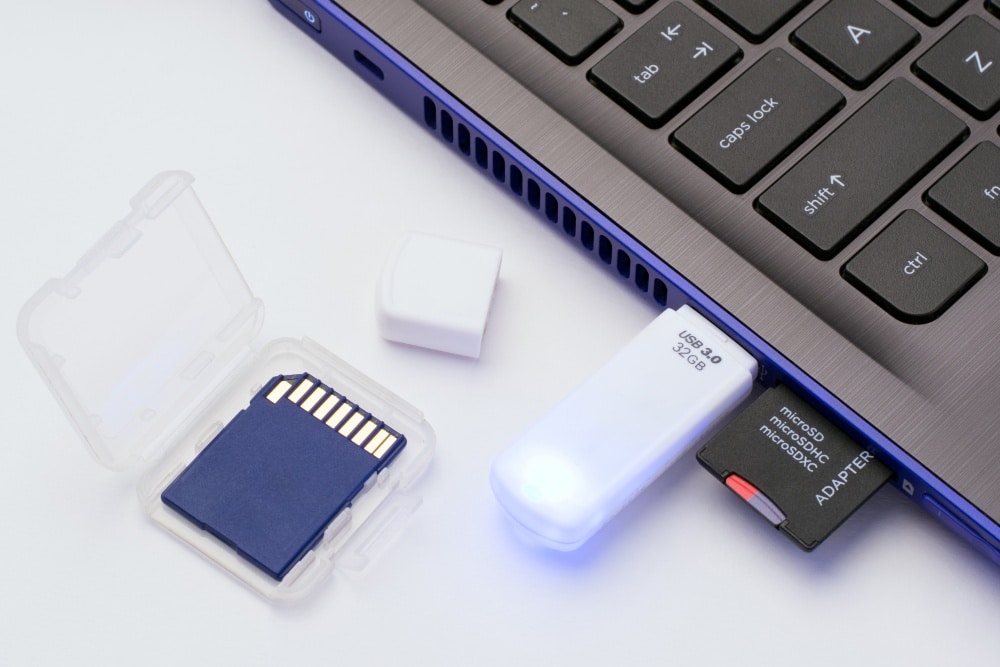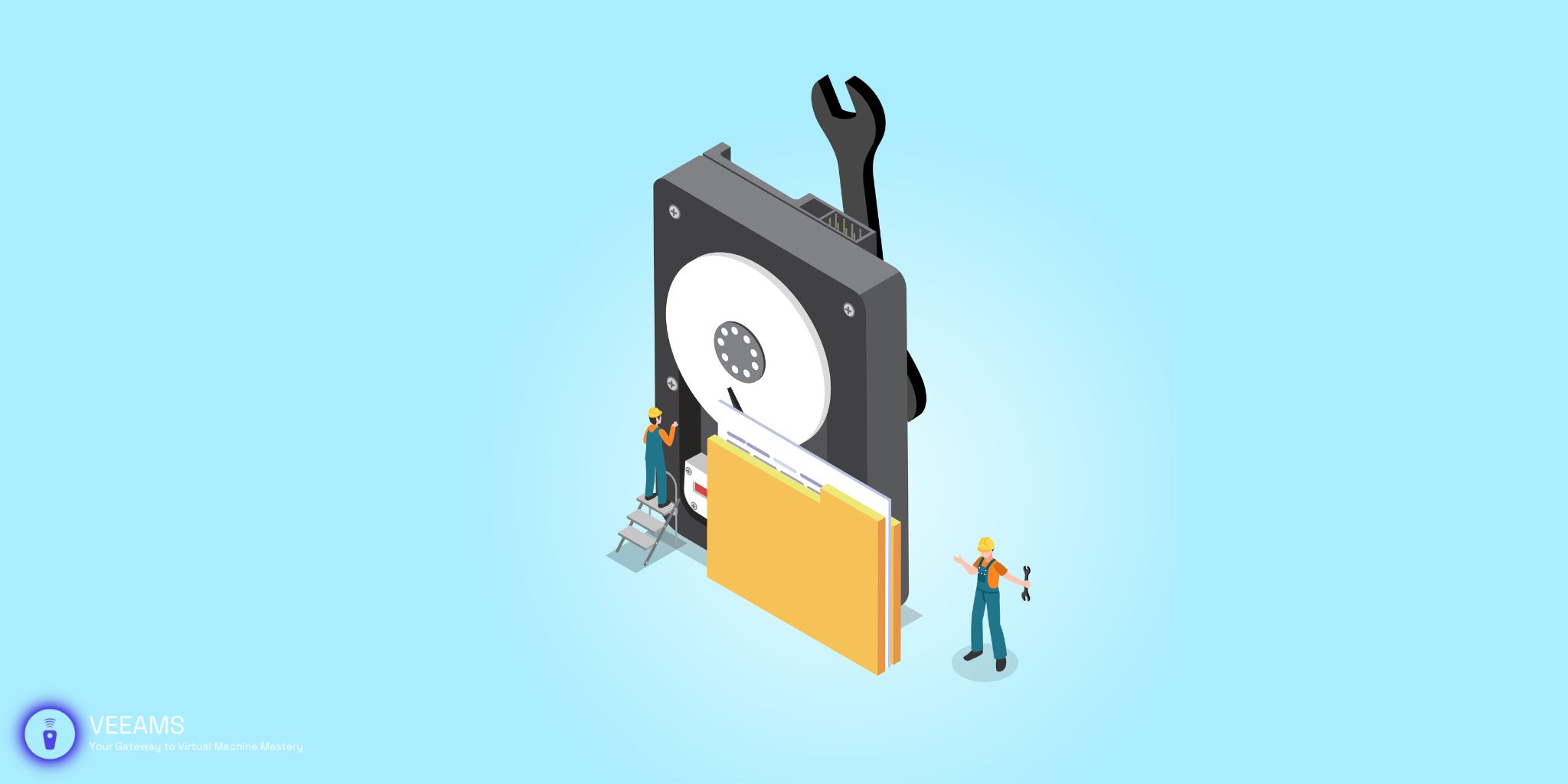Welcome to our comprehensive guide on converting physical disks to VHD (Virtual Hard Disk) format. Whether you’re a tech enthusiast looking to virtualize your physical hardware for better management and flexibility, or a professional seeking to streamline your IT infrastructure, you’ve come to the right place. This guide is designed to walk you through the entire process of converting physical disks into VHD files, using the best tools and practices available.
Preparation for Conversion
The success of converting your physical disk to a VHD largely depends on the preparation steps. Here’s how to ensure your disk is ready for a smooth conversion process:
- Data Backup with Windows Backup and Restore: Before proceeding, use Windows’ built-in Backup and Restore feature to safeguard your data. Navigate to Control Panel > System and Security > Backup and Restore (Windows 7), then select “Create a system image”. Choose an external drive or network location for your backup and follow the prompts to create a complete backup of your disk.
- Disk Cleanup Using Disk Cleanup Tool: To reduce the conversion time and the VHD file size, clean up your disk. Type “Disk Cleanup” in the Windows search bar, select the drive you want to clean, and choose the files to delete, including temporary files and system files.
- Check Disk Health with CHKDSK: To check your disk for errors, open Command Prompt as an administrator and type
chkdsk C: /f /r, replacing “C:” with the letter of the disk you’re converting. This command will scan for and fix disk errors, requiring a system reboot if the disk is in use. - Software Update via Windows Update: Ensure your system and software are up to date for compatibility and security. Go to Settings > Update & Security > Windows Update, and click “Check for updates” to install any available updates.
Selecting the Right Tools for Conversion
Now, let’s get into the specifics of the tools you can use for the conversion, highlighting key features and how to use them:
- Disk2vhd Instructions: Disk2vhd is a user-friendly, portable tool by Sysinternals. Download it from the Microsoft website, and run the executable. Select the volumes you wish to convert, choose a location to save the VHD, and click “Create”. Disk2vhd is particularly useful for creating VHDs of system volumes while the system is running.
- StarWind V2V Converter Steps: This converter supports various formats and can convert images directly from one format to another. Download and install the software from StarWind’s official site. Launch it, select the source disk, and choose the VHD format as the target. The tool provides options for conversion with or without size alteration, catering to different storage needs.
- Using VMware vCenter Converter: Ideal for larger IT environments or where batch conversions are needed. Download from VMware’s site and install. Upon launching, select “Convert machine” and specify the physical machine as the source. Choose the destination type as “VMware Workstation or other VMware virtual machine” and select VHD as the disk format. Follow the wizard to complete the conversion, adjusting settings as necessary for your environment.

Step-by-Step Guide to Converting Physical Disks to VHD
Converting your physical disk to a VHD file involves a few critical steps. By following this guide, you’ll ensure the process is both efficient and error-free.
- Using Disk2vhd for Conversion:
- Launch Disk2vhd and select the physical drives you wish to convert. It’s advisable to exclude any external drives or non-essential volumes to streamline the conversion.
- Choose a destination for the VHD file. A secondary drive with ample space is recommended, as the VHD size can closely match the used space of your physical disk.
- Check the “Use Vhdx” option if you’re running on Windows 8 or later for a more advanced and resilient disk format.
- Click “Create” to start the conversion. The time required will depend on the size of your disk and the speed of your system.
- Converting with StarWind V2V Converter:
- After opening the StarWind Converter, select the local file as the source and navigate to your physical disk.
- Choose the VHD format as your target. You have the option to convert the disk to a fixed or dynamic disk. Fixed disks consume more space but offer better performance, while dynamic disks are more efficient with space but can be slower.
- Follow the prompts to complete the conversion. The tool also allows for conversion to the newer VHDX format, which is recommended for its improved performance and larger storage capacity.
- VMware vCenter Converter for Bulk Conversion:
- This tool is ideal for converting multiple machines or for integrating into a VMware environment. Start by selecting the physical machine(s) you want to convert.
- Specify the target format and destination. For VHD, you’ll be setting up the conversion to work with other virtualization platforms outside of VMware.
- Adjust conversion settings as needed, including disk resizing and network configuration.
- Begin the conversion. VMware Converter is designed to handle larger-scale conversions efficiently, making it suitable for enterprise environments.
Troubleshooting Common Issues
During the conversion process, you might encounter several common issues. Here are tips for troubleshooting:
- Conversion Fails or Freezes: Ensure there’s enough free space on the destination drive for the VHD. Check the health of the physical disk for bad sectors or errors before conversion.
- Slow Conversion Speed: This can be due to disk I/O limitations. Converting from a disk with a high read/write speed to an SSD destination can improve speed.
- Boot Issues with Converted VHD: Make sure the VHD is set up correctly in your virtual machine settings. For boot issues, consider using a boot repair tool or checking the VHD for corruption.
Optimizing Your VHD After Conversion
After successfully converting your physical disk to VHD, a few optimizations can enhance the performance and usability of your virtual disk:
- Compacting the VHD: If you’ve chosen a dynamic disk, compacting it can reduce its size on your storage.
- Defragmenting the VHD: While this is more beneficial for older HDDs, defragmenting can improve access speed in some cases.
- Checking for Updates: Ensure the virtual machine has all the latest updates for the operating system and software to maintain security and performance.
